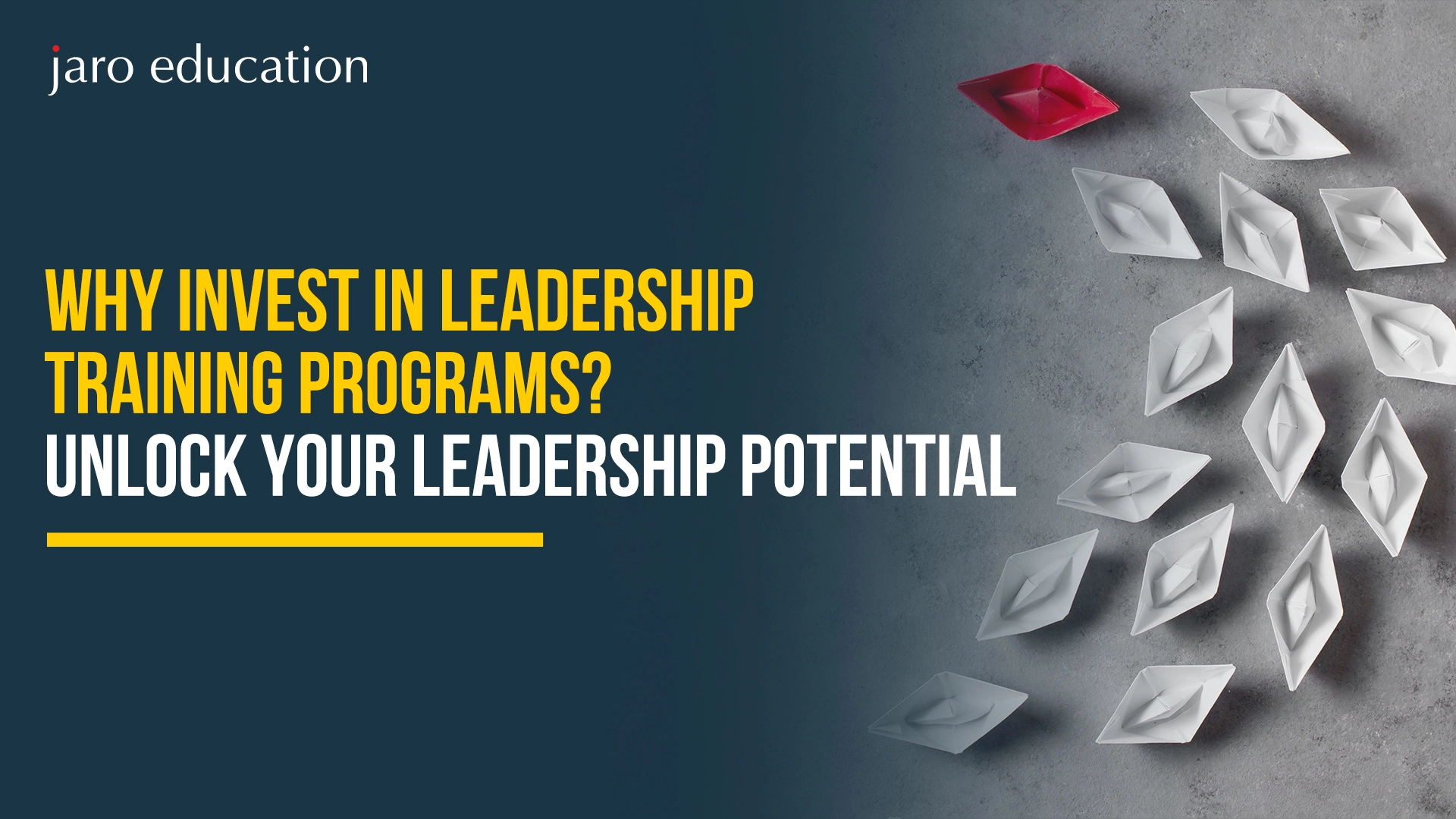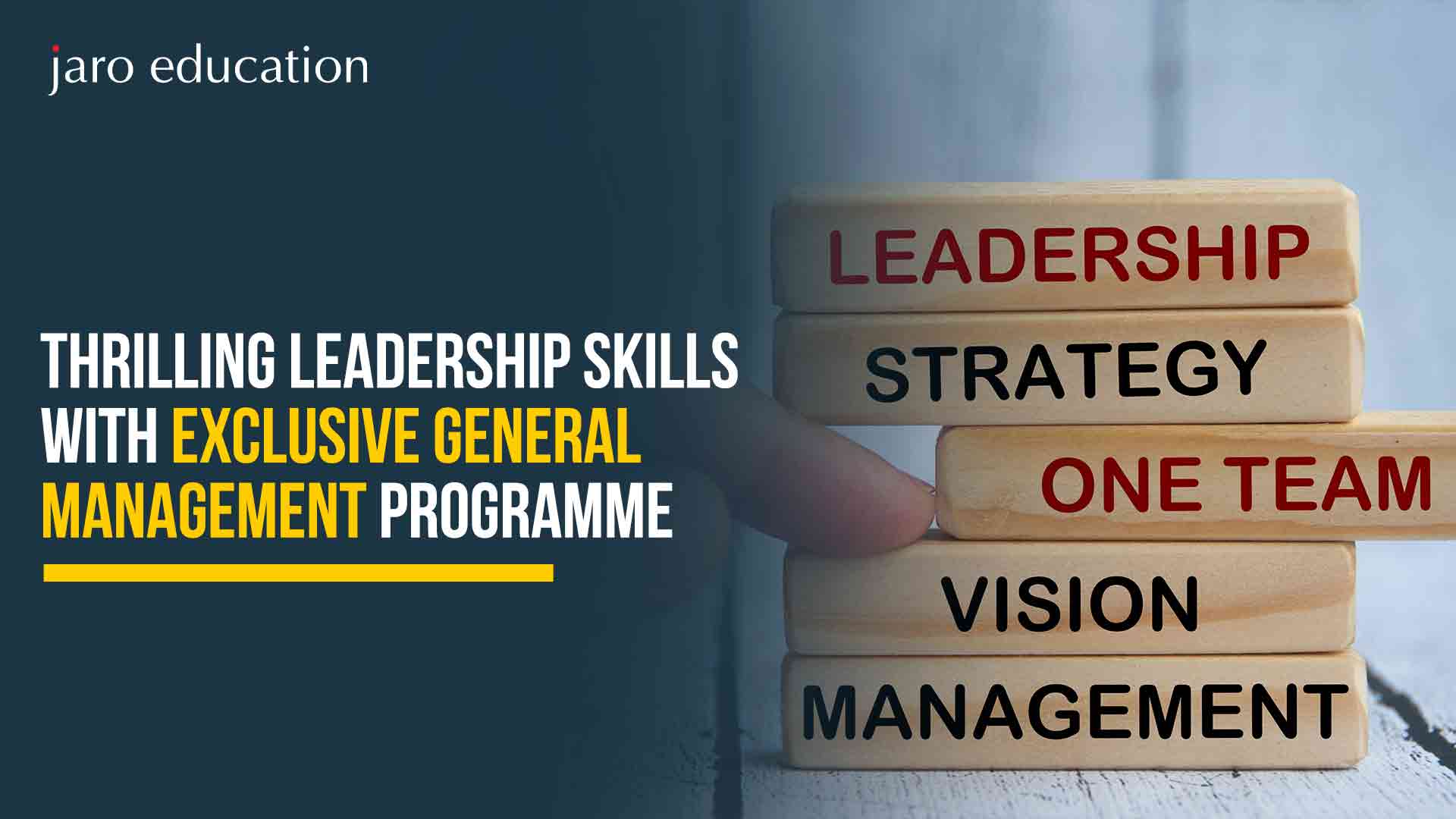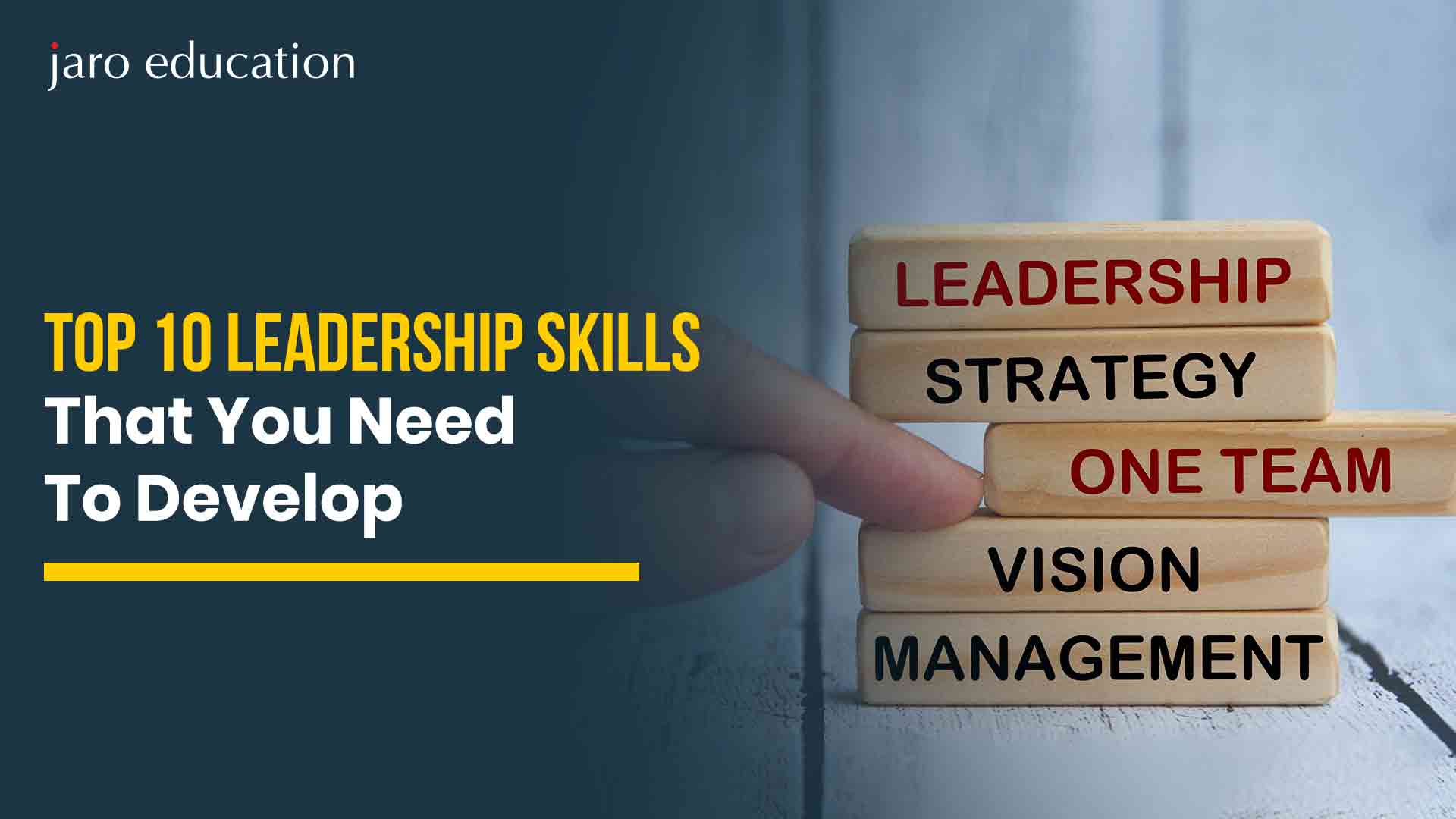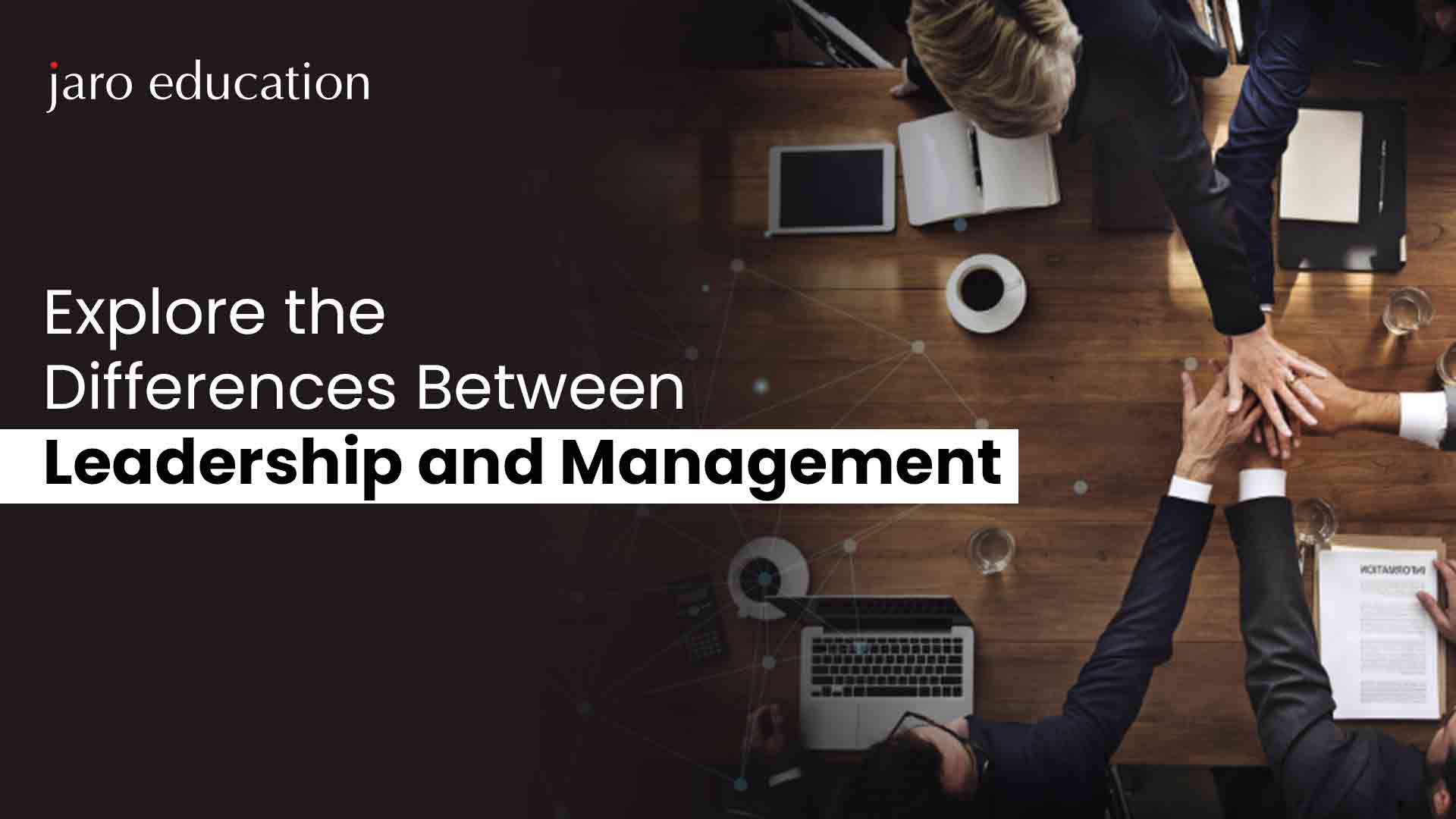Difference Between Strategic Leadership And Change Management
Table of Contents
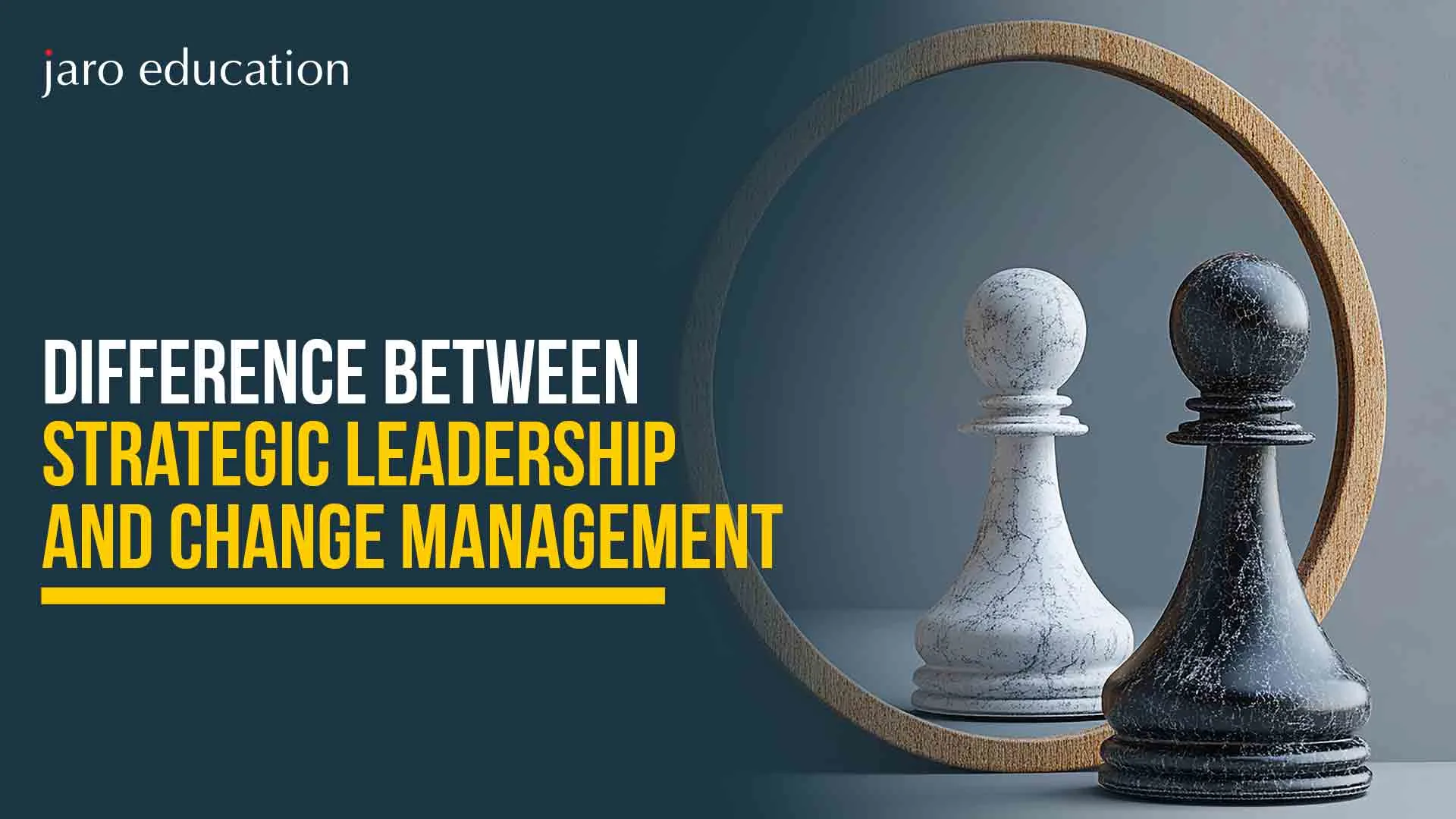
- jaro Education
- 13, October 2024
- 3:00 pm
The world of business management is constantly evolving. With new ways of management, businesses try to thrive in the market. There have been a lot of discussions around strategic leadership and change management across the business domain. Both these aspects often intersect each other intriguingly. Strategic leadership and strategic planning revolve around a long-term vision. On the other hand, change management involves an action-oriented approach. Together, they give the organization its competitive advantage.
What is Strategic Leadership?
To start the leadership, firstly, keep a business going; secondly, one needs to understand strategic leadership and change management, along with their interdependent role. Here, we will highlight the two integral terms to help you understand them better.

Strategic leadership and strategic planning are effective in compelling others to go about doing things in their way that will boost the long-run prosperity of an organization, and ensure the short-run stability.
Strategic leadership in layman’s terms should be interpreted to mean leading with foresight. It is business smarts crossed with passion to inspire individuals, foster creativity and innovation, and lead through complexity to accomplish high-level objectives.
Skills for Strategic Leaders
To become an efficient strategic leader, you must be committed to your organisation’s vision, goals, and objectives. You should know how to use your power wisely, be transparent, communicate efficiently, solve problems, and be ready to delegate responsibilities and tasks accordingly. Being passionate about what you do and exhibiting compassion, empathy, and self-awareness is important.
| Skills | Description |
|---|---|
| Anticipate | Use several inside and outside sources to gather information about your organisation. This is quite useful in understanding how the competitors will react to your product in the market. |
| Question | Looking at a particular scenario from different perspectives helps you unveil the underlying root causes much better. |
| Interpret | Being curious and open-minded aids in testing different hypotheses and involving others’ perspectives before concluding a particular scenario. |
| Make Informed Decisions | While making decisions, you should consider both your short-term and long-term goals and objectives, as well as the risks and trade-offs for your customers and stakeholders. |
| Harmonise | Examining the incentives and tolerance to drive a change amongst your stakeholders and identifying areas of conflicting interests is crucial for strategic planning. |
| Adapt | Sharing stories of your successes and failures promotes a wide learning culture. Adjust decisions if you identify new evidence contradicting those. |
What is Change Management?
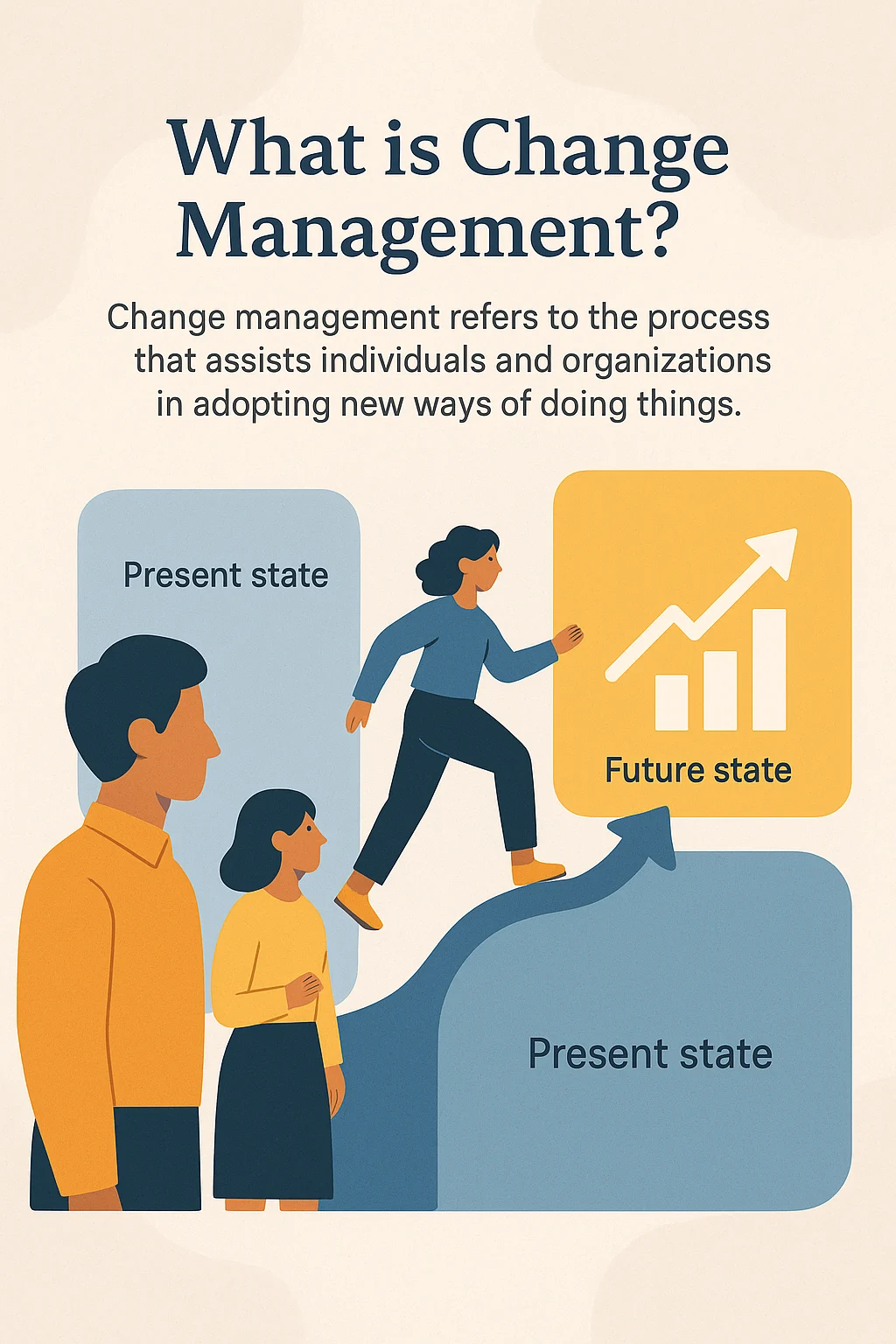
Change Management defines a systematic way through which individuals, teams, and organizations are taken through a transition process between the present and an aspired future state. It is a process of making, assisting and instructing individuals with regard to change to attain a certain effect or enhancement.
Simple Meaning:
Change Management refers to the process that assists individuals and organizations responses towards adopting new means of doing things.
Why Change Management (CM) is Important?
Change management is a crucial process for facilitating a relatively smoother transition during the change process. While enforcing changes is easier, a lack of proper planning, implementation, monitoring, and assessment may fail. Regardless of the desired change, introducing a change management plan provides a view from an eagle’s eye into your overall process. This is what you need for a substantial implementation plan and investment.
Types of Change Management?
- Organizational or Transformational Change
This pertains to the initiatives of change management encompassing significant scale and scope. These transformations are profound, involving alterations to the hierarchy of your organizations. Besides, it also introduces new products and undertakings of digital transformations.
- Adaptive or Gradual Change
These change projects are smaller in scale and involve incremental modifications or alterations to your products, processes, business strategies, and workflows. Examples of such transformative projects include:
Best Tools for Strategic Leadership and Change Management
There are several tools for effective strategic leadership and change management. Some of them are highlighted below –
Strategic leadership and change management models cover many concepts, theories, and methodologies for a thorough perspective on driving your organisational change. Their collective purpose is to furnish a roadmap for instigating organisational changes to steer through a transformative journey and ensure the acceptance and integration of these changes.
These changes pertain to newly onboarded employees to acquaint them with the procedures of your company, modifications of internal tools, and department-specific adjustments. Crucially, they are important in establishing changes according to your prevailing standards.
Here are the top tools for driving strategic change management:
| Tool Name | Purpose | Use Cases |
|---|---|---|
| SWOT Analysis | Identifies internal strengths/weaknesses and external opportunities/threats | Helps leaders define goals and plan strategic moves |
| PESTLE Analysis | Analyzes external factors (Political, Economic, Social, etc.) | Guides long-term strategy by understanding macro-environmental influences |
| Balanced Scorecard | Links performance metrics to strategic goals | Aligns business activities with vision and strategy |
| OKRs (Objectives & Key Results) | Sets and tracks measurable goals | Ensures alignment across departments and drives results |
| Scenario Planning | Explores possible future scenarios | Prepares leaders for uncertainty and multiple outcomes |
| McKinsey 7S Framework | Aligns seven internal elements for effectiveness | Assesses organizational structure, skills, and strategy alignment |
Difference in Strategic Leadership and Change Management
Below are the differences in strategic leadership and change management –
| Aspect | Strategic Leadership | Change Management |
|---|---|---|
| Definition | The ability to lead an organization toward long-term goals and vision | The process of guiding individuals and teams through organizational change |
| Focus | Vision, direction, and long-term strategy | Execution, adaptation, and smooth transition during change |
| Goal | Achieve sustainable competitive advantage and growth | Minimize resistance and ensure successful adoption of change |
| Approach | Proactive – setting the course | Reactive & proactive – responding to and managing change |
| Time Orientation | Majorly work on Long-term | Plan from Short term to medium-term |
| Key Activities | Vision setting, strategic planning, innovation, leadership and strategic planning alignment | Communication, training, stakeholder engagement, and impact analysis |
| Role in Organization | Drives big-picture decisions and aligns teams with organizational goals | Supports the execution of change initiatives effectively |
| Involves | Top-level leaders and senior executives | Change agents, HR, middle managers, and affected employees |
| Examples | Launching a new market strategy and reshaping the company vision | Implementing a new software system, restructuring departments |
| Tools Used | SWOT, PESTLE, Balanced Scorecard, OKRs, McKinsey 7S | ADKAR, Kotter’s 8 Steps, Lewin’s Model, Impact Analysis, Communication Plans |
How Does Jaro Education Help?
Jaro Education, in association with CEP, IIT Delhi, offers the best Executive Management Programme in Advanced Strategic Management. They have exclusively designed the programme for individuals aspiring to attain a leadership and strategic planning edge in strategic change management. This programme instigates aspirants’ essential skills and knowledge to flourish as strategic change drivers. The programme highlights are –
– Get a certificate from the renowned institute, IIT Delhi
– Learn organizational strategies based on a holistic curriculum
– Get a chance to interact with the IIT Delhi faculty
– Indulge in different case studies with your peers
Conclusion
It is a collective teamwork of the strategic leaders and change drivers that aids in formulating a successful business management strategy. While both of them possess their own unique set of skills and delivery styles, they come together to guide and drive your organisation towards success. Strategic leadership and strategic planning looks ahead of time with more significant desires, while the change makers focus on exhibiting their precise course of action. They formulate a strong combined strategy for adapting to your business to fast changes and driving key transformations.
Frequently Asked Questions
Answer: Strategic leadership is the ability to influence others to make decisions that support the long-term success and vision of an organization. It involves setting direction, aligning people, and driving growth.
Answer: Strategic leadership helps organizations stay competitive, adapt to changes, and achieve long-term goals. It ensures that everyone is working toward a shared vision with a clear strategy.
Answer: Strategic leaders are visionary, decisive, adaptable, communicative, and focused on long-term success. They inspire teams and make informed decisions even during uncertainty.
Answer: Strategic leadership focuses on long-term goals and future planning, while operational leadership deals with daily tasks, short-term goals, and process efficiency.
Answer: Popular models include:
- McKinsey 7S Framework
- Balanced Scorecard
- Strategic Leadership Model (Vision → Alignment → Execution)
- John Kotter’s 8-Step Change Model (for leading strategic change)





